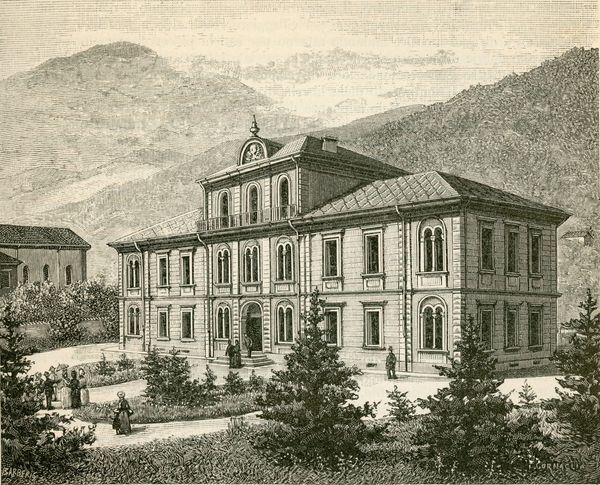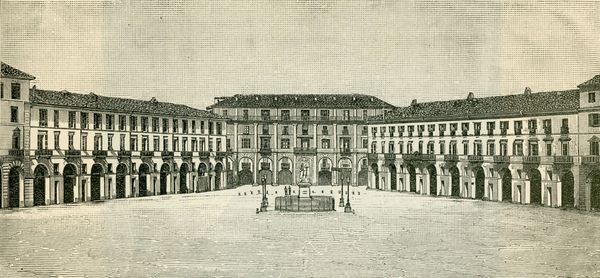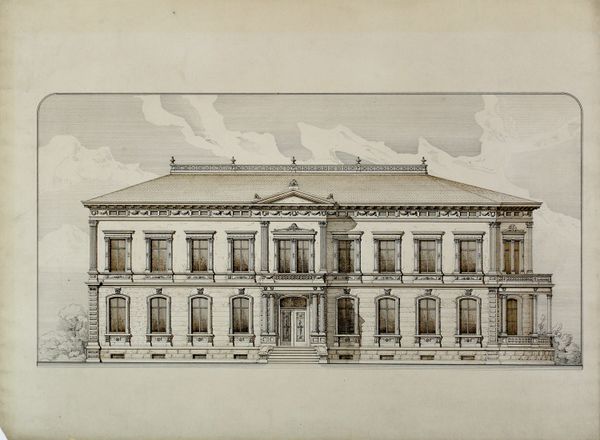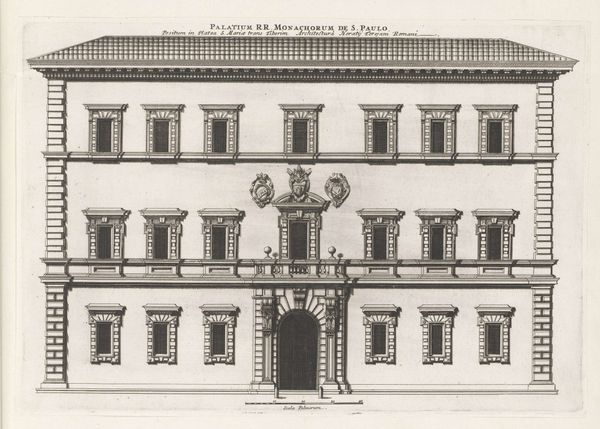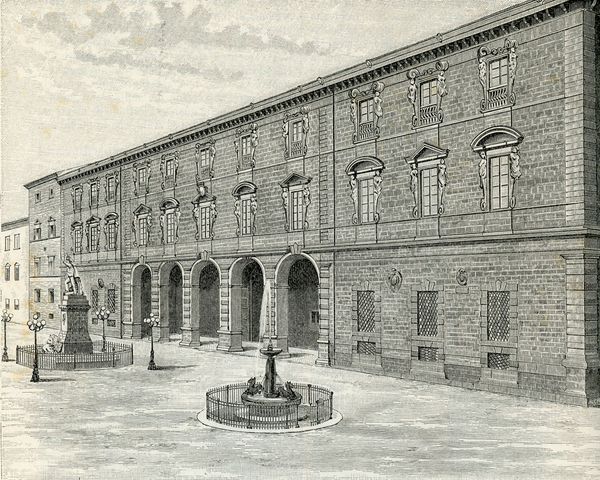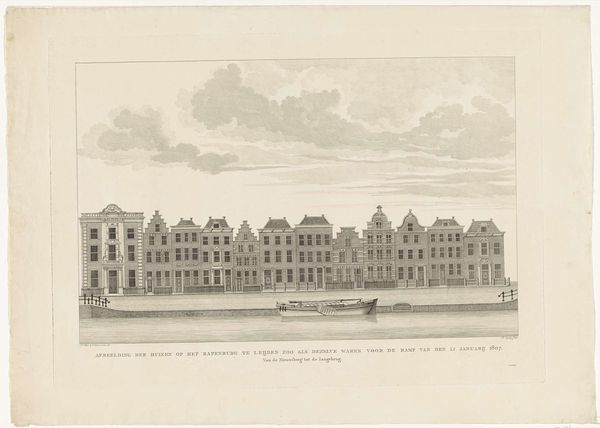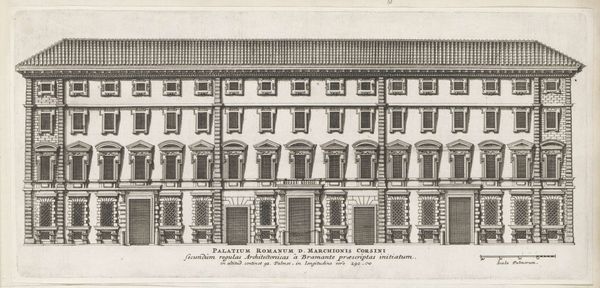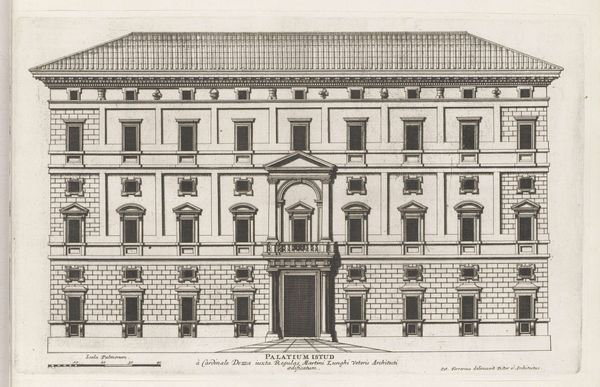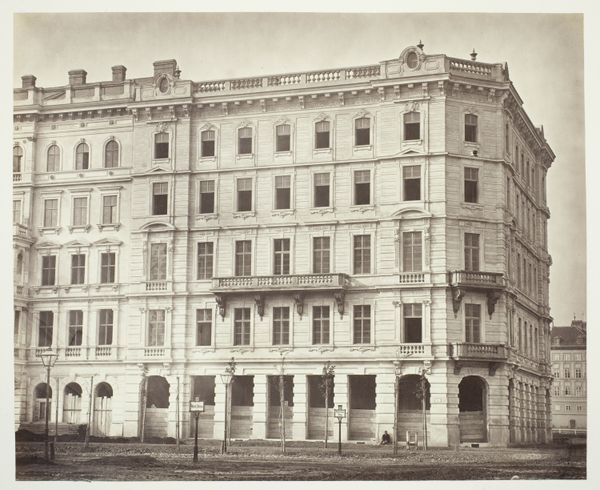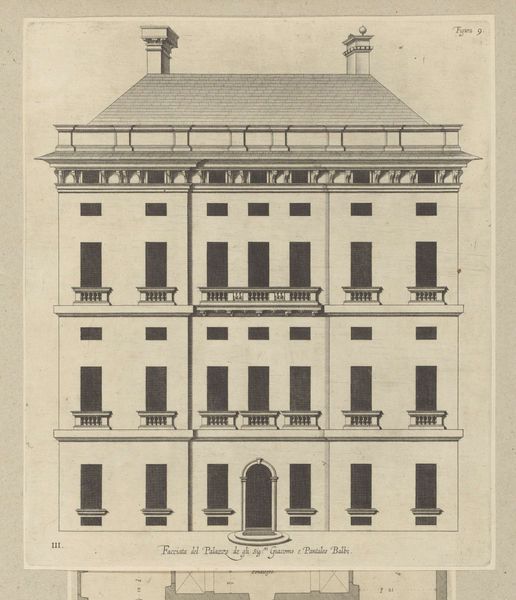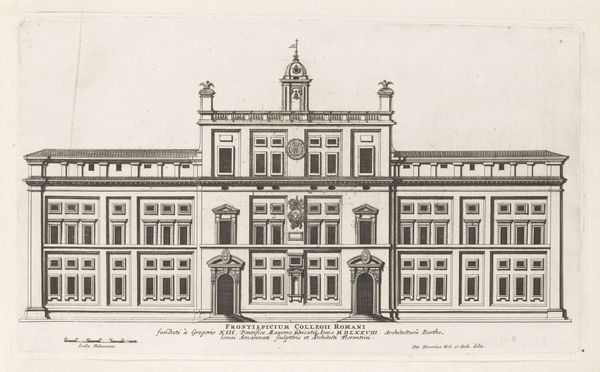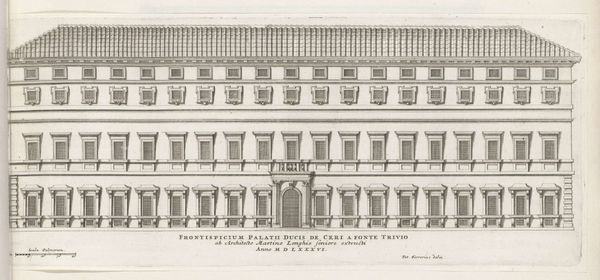
drawing, print, etching, engraving, architecture
#
drawing
# print
#
etching
#
etching
#
architectural drawing
#
engraving
#
architecture
Copyright: Public domain
Editor: Here we have Giuseppe Barberis' "Nuovo Politeama Verdi," created around 1900. It appears to be an architectural drawing, maybe an etching or engraving. It seems incredibly precise; the lines are so crisp and clean. What strikes me is the contrast between this very orderly structure and the implied vastness of nature in the background. What can you tell me about it? Curator: Considering this work through a materialist lens requires us to examine not just what is represented, but how it was made and within what economic and social circumstances. This is a print; it implies a reproducibility that's key to understanding its purpose. It wasn’t meant to be a unique art object, but something disseminated. How do you think its availability through prints impacted the building itself and how architecture was perceived? Editor: I suppose it would have served as advertising or maybe even blueprints. Distributing the design so widely would certainly increase its cultural value, or perhaps make the architect famous... I'm curious about the materials of the building it represents. Can we glean anything about social class from that? Curator: Absolutely! Look closely at the details Barberis emphasizes – the regularity of the windows, the classical columns. These features weren't just aesthetic choices; they required specific materials – stone, glass, processed lumber – all products of particular industries, specific labor, and class divisions in 19th-century society. What does this building promote in a material sense? Is it craft? Is it mass production? Is it trying to communicate value through excess? Editor: It’s fascinating to think of the print not just as an image, but as evidence of resource extraction and industrial processes. The building almost seems secondary. Thank you; I’ll definitely consider this building's materials and the means of its production and distribution going forward! Curator: Precisely. By considering the material circumstances of both its creation and subject, we see how deeply implicated even an architectural drawing is within larger systems of labor and capital.
Comments
No comments
Be the first to comment and join the conversation on the ultimate creative platform.
